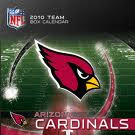
Tax and spend, but not in that order.
I think at this point there needs to be a focus on an immediate increase in spending and I think this is a time when deficit fear has to take a second seat . . . I believe later on there should be tax increases. Speaking personally, I think there are a lot of very rich people out there whom we can tax at a point down the road and recover some of the money." -- Barney Frank, October 20, 2008
The election is still two weeks away, but we are already living in the world of Obamanomics. In fact, on fiscal policy we've been living in that world at least since February when the Bush Administration conceded to the Congressional priority of Keynesian fiscal "stimulus." That didn't work very well, but no matter. Spurred on by Barack Obama, Democrats in Congress are preparing Round Two, this time in the form of $150 billion to $300 billion in new spending.
If we may borrow a phrase, this is the triumph of hope over experience. The one thing Washington hasn't failed to do in recent years is spend, yet the economy doesn't seem to have improved on the event. Brian Riedl, a budget expert at the Heritage Foundation, has calculated that in 2008 Congress enacted $332 billion of "emergency" supplemental spending bills, only half of which was for the Iraq war. Do you feel stimulated?
The nearby chart shows the arc of tax policy and economic growth across the Bush years. After the dot-com bust, President Bush compromised with Senate Democrats and delayed his marginal-rate income tax cuts in return for immediate tax rebates. The rebates goosed spending for a while but provided no increase in incentives to invest. Only after 2003, when the marginal-rate cuts took effect immediately, combined with cuts in dividend and capital gains rates, did robust growth return. The expansion was healthy until it was overtaken by the housing bust and even resisted recession into this year. Mr. Bush and Congress returned to the rebate formula in February, but a blip in second-quarter growth has now ended as the economy heads into recession. The Dow plunged again yesterday with a 514-point drop.
The latest plan is even worse than the spring round of $100 billion or so in tax rebate checks. At least rebates allowed taxpayers to spend their own money. Under this stimulus the government will tax or borrow $150 billion to $300 billion in order to spend the money on social and pork-barrel programs. The latest draft would direct dollars to food stamps, another expansion in unemployment insurance, home heating subsidies, more aid to states and cities, and "infrastructure" like roads, bridges and public transit. Because of Davis-Bacon wage requirements on these brick and mortar projects, a portion of the dollars would coincidentally flow to the Democrats' biggest campaign contributors: unions. Call it a political "rebate" check.
On Tuesday Senator Obama said this spending would create millions of new jobs by closing a federal "investment deficit." Over the past eight years the federal budget has exploded by more than $1.1
trillion, much of it for the very programs that Democrats want to spend more on. Let's start with infrastructure. Three years ago Congress passed a transportation bill of more than $286 billion. The transportation budget is up 22% after inflation in the past eight years. Roads and bridges can help economic growth if they increase productivity by more than the amount they cost in higher
taxes or borrowing. But not if they are bridges to nowhere as so many of these projects are.
How about aid to local communities? That spending has soared by 91% after inflation in eight years. The education budget is up 57%. Welfare programs are up 30%. Only two years ago Democrats were calling the Tom DeLay Republicans spendthrift. Now they say there's an "investment deficit."
Federal budget deficits are not something we obsess about, but eventually this new spending has to be paid for, and Barney Frank's comments only underscore that big tax increases are coming. The prospect of these tax increases is now hanging over the economy like a pall, as investors and businesses wonder where and how heavily an Obama Administration and Congress would strike.
The pall is likely to continue well into 2009, as millions of Americans delay their investment decisions until they know how much their after-tax returns are likely to fall.
If Mr. Obama really wants a "stimulus," he'll announce that given the condition of the economy he won't raise taxes at all. Meanwhile, all of us are getting a preview of Obamanomics in action.















No comments:
Post a Comment